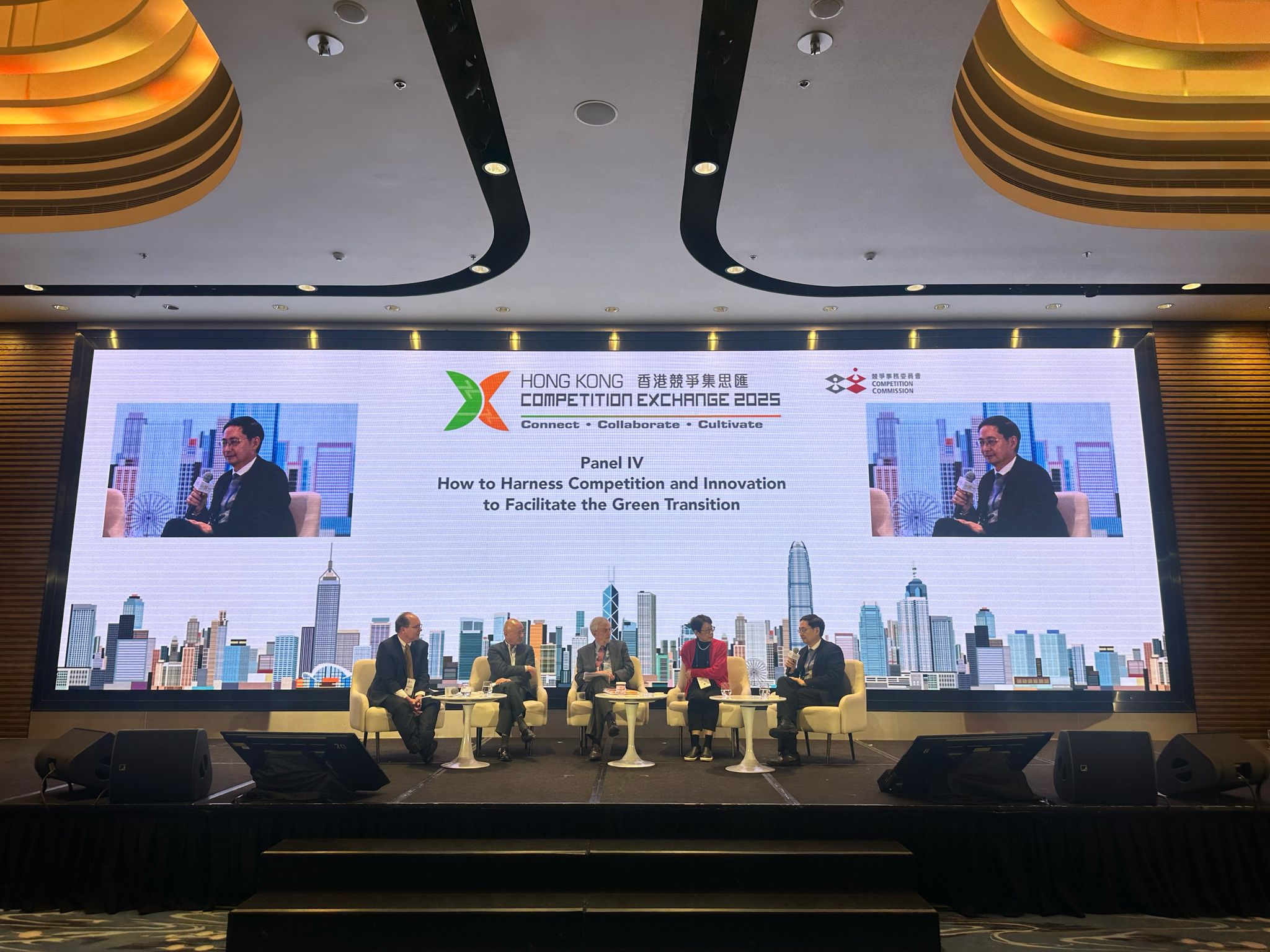
On March 25, 2025, Dr. Ma Jun, Chairman of the Hong Kong Green Finance Association and Chairman of CASI, spoke at the Hong Kong Competition Exchange 2025, organized by the Hong Kong Competition Commission.
Ma Jun said that, while in the US many institutions had to withdraw from ESG or net zero coalitions for fear of being challenged as a violation of competition laws, in the rest of the world “we need to encourage further collaboration and cooperation and even regulation, to improve comparability, interoperability, and consistency on sustainable finance standards and practices.” He believes that “excessive competition, leading to market segmentation and greenwashing risk, is a bigger concern for the sustainable finance market”.
The need for harmonization in sustainable finance standards/practices
During the discussion, Dr. Ma highlighted four examples that illustrate the crucial role of harmonization of sustainable finance standards and practices in addressing market inefficiencies.
1. Taxonomy Alignment
Over 400 definitions of "green" activities currently exist, leading to market fragmentation and increased costs for cross-border green finance transactions. There is a global consensus that interoperability needs to be improved on taxonomies across jurisdictions. To address this, China and the EU collaborated to develop the Common Ground Taxonomy (CGT), which has facilitated green capital flows. Building on this, Singapore has joined the initiative to form the Multi-jurisdiction CGT (MCGT), further expanding its impact.
2. Sustainability Disclosure Standards
Previously, companies and investors faced a confusing array of sustainability/ESG disclosure frameworks, making comparisons a challenging task especially for those managing international portfolios. The launch of the ISSB’s IFRS S1 and S2 standards, which consolidate and build on existing frameworks, marks a significant step toward global alignment. Over 20 jurisdictions, including major economies, now adopt or align with these standards.
3. ESG Rating Methodologies
There are too many ESG rating methodologies that result in inconsistent and uncorrelated rating results for the same companies or assets, which again confuse the market and increase costs for investment analysis. To address this, market associations and regulatory bodies are working to align and compare methodologies, enhancing transparency and credibility in ESG assessments.
4. Green Verification
The green verification market has faced challenges due to oversaturation, with intense competition driving down prices at the expense of quality. To address this, China has introduced an entry bar for verification providers, ensuring that only qualified entities can operate. This policy intervention enhances service quality and strengthens credibility in the market.

